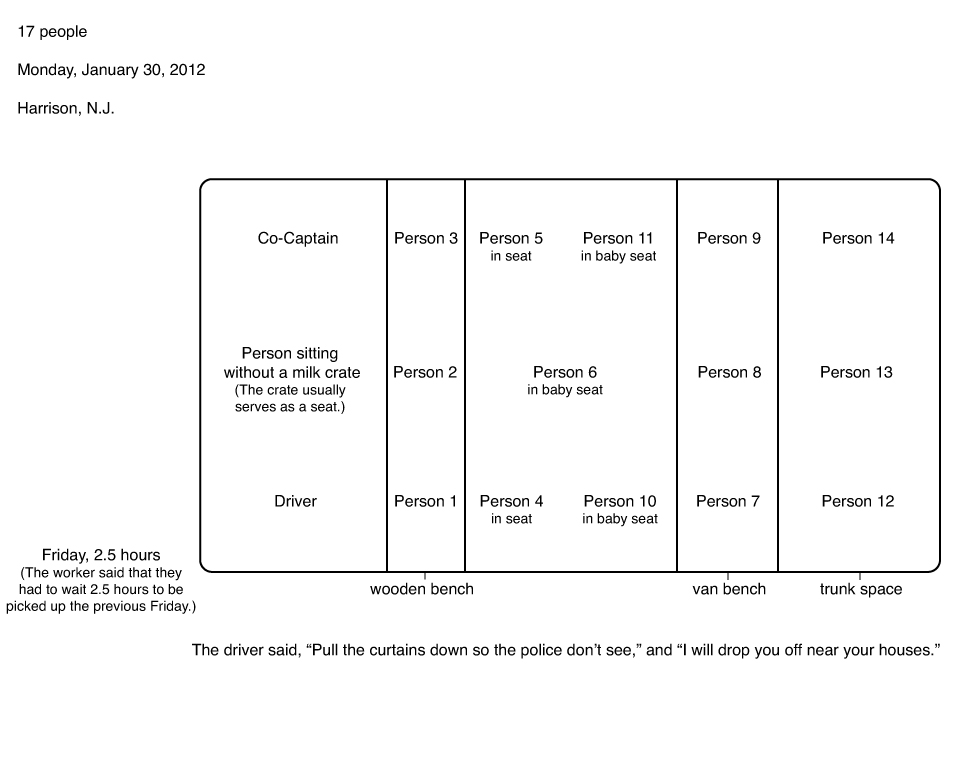Michael Grabell of ProPublica Wins July Sidney for Portrait of Our "Permatemp" Nation

Michael Grabell of ProPublica has won the July Sidney Award for “The Expendables: How the Temps Who Power Corporate Giants are Getting Crushed,” a portrait of our new permatemp nation. There are 2.7 million temporary workers in the United States, more than ever before. Temps earn 25% less than their full-time counterparts and they are more likely to be injured on the job.
Across the country, workers rise before dawn and gather at labor centers to wait for assignments. If they are chosen, they are often pressured to ride to the job site in overcrowded minivans. The graphic above is based on a diagram that a New Jersey worker drew to show how his lagency crams seventeen people into a single van by making passengers sit on baby seats, perch on milk crates, and ride in the trunk. Just getting chosen and getting to work can take over 2 hours, and none of this time is paid. Agencies may also charge temps fees, which can drag their already meager pay below minimum wage.
Companies use staffing agencies to insulate themselves from an employer’s usual responsibilities to workers. If temp workers in Walmart factories are taking home less than minimum wage, or their immigration status is going unchecked, Wal-Mart can outsource the blame to the staffing agency.
Temps aren’t just stop-gap labor anymore. Since the 1960s, the staffing industry has waged a marketing campaign in the business press to convince employers that their staffs are a burden rather than an asset. Many companies, including Walmart, Nike, and Frito-Lay, bought the marketing pitch and made a huge pool of temporary workers a permanent part of their business models.
Grabell and I talk more about the permatemp boom and its effects on workers and the American economy in our Backstory interview.
[Graphic: Michael Grabell and Krista Kjellman Schmidt, ProPublica, Templand: Working in the New Economy.]







